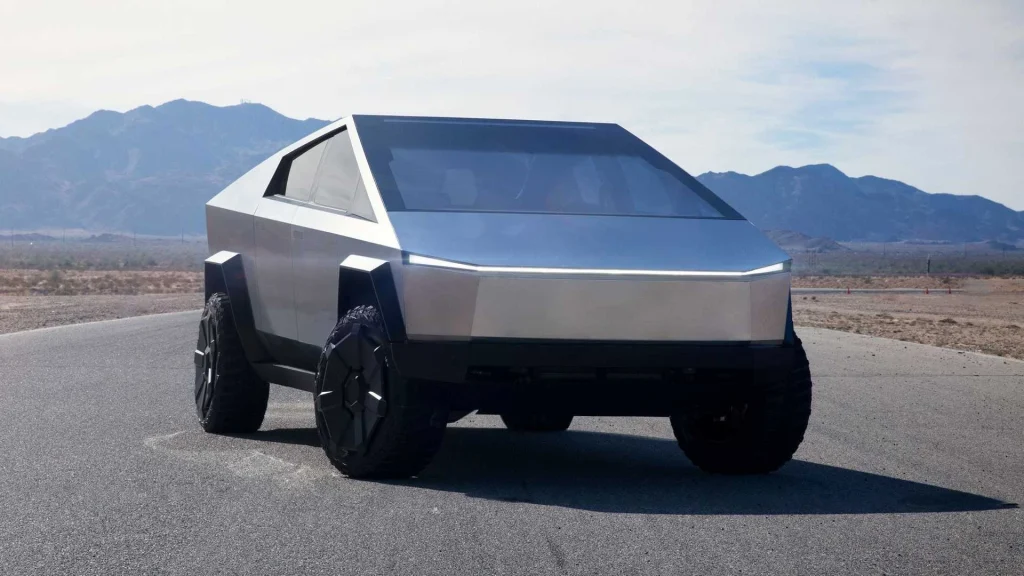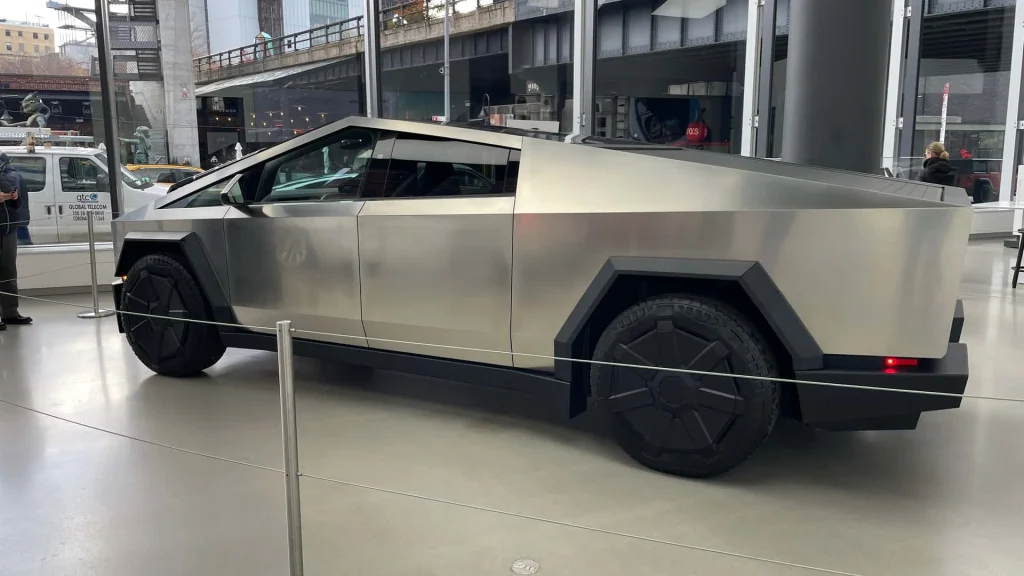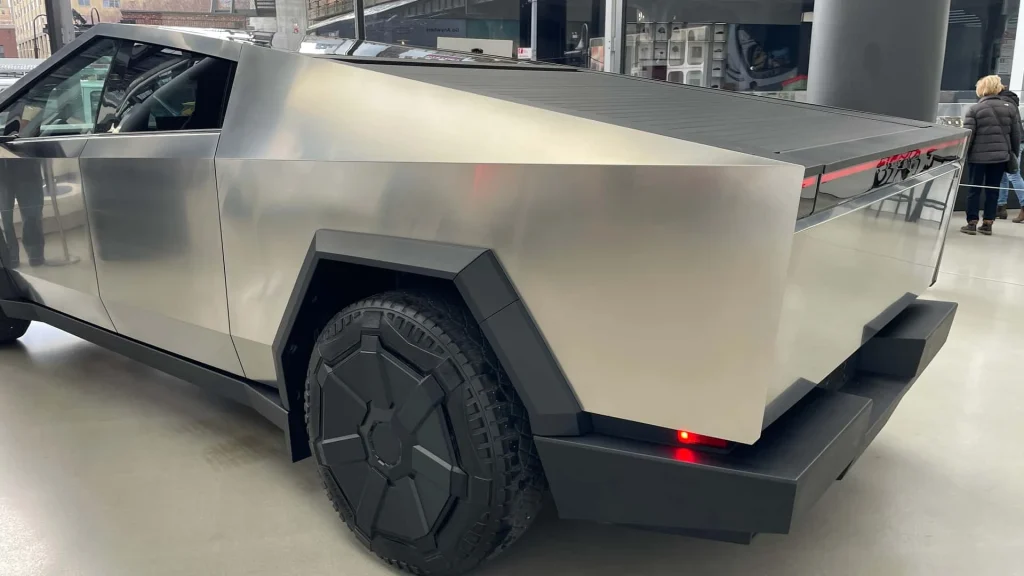So, dear reader, it seems Tesla has its hands full behind the scenes, and the issue at hand is the Cybertruck. But calm down, no need to panic yet. What’s happening is that Elon Musk’s company, without fanfare, has been replacing the batteries in some of the first units of its much-talked-about electric pickup truck. The reason? Well, apparently, some cells in these batteries are arriving dented, which, let’s be honest, isn’t ideal.
The information that arrived is that, in the last two months, Tesla has called back a bunch of people who bought the Cybertruck to make this swap. The curious detail is that this is happening very quietly, without an official recall. Just imagine, you take your car, in this case, the pickup truck, to fix a side mirror, and suddenly, you come back with a brand-new battery. Strange, right?
First Cybertrucks Have Batteries Replaced
The first Cybertruck units, delivered between February and July, are at the center of this secretive Tesla operation. It seems that the problem of dented cells mainly affects these initial models. It’s as if the company is racing against time to correct a slip-up in the production line before the whole thing turns into a snowball.
And look, we know Tesla likes to do things its own way, but this time, the lack of a formal announcement is drawing attention. The replacement is happening, but without an official statement, which leaves everyone in the dark, without knowing exactly what is happening and the extent of the problem.
Problem with Cybertruck Battery Cells
The crux of the matter is the aforementioned dented cells in the Cybertruck batteries. This type of damage can cause short circuits and, eventually, compromise the functioning of the entire battery. It’s not something you can notice in daily use, but certainly, a problem that needs special attention from Tesla technicians.
However, Tesla isn’t giving many details about how these cells were damaged. Some say it’s just a localized problem, but others are speculating about the quality of the production processes, right? The truth is, if you have a Cybertruck produced during this period, it’s good to keep an eye on it.
Cybertruck Replaces Batteries Without Official Recall
That’s where things get more interesting. Instead of announcing a recall, which would be the traditional approach, Tesla chose to solve the problem discreetly. Owners of the affected Cybertrucks are being contacted individually to take their vehicles to service centers. It’s as if the company wants to avoid the commotion that a recall usually causes.
This strategy, however, has two sides. On the one hand, it prevents the news from spreading and causing panic among consumers. On the other hand, it raises a question about transparency. Is Tesla being completely open with its customers? Or is there something more under the rug?
Tesla Avoids Cybertruck Recall for Image
Now, why would Tesla be avoiding an official recall? Two theories are the strongest. First, it may be that the company really considers the problem small and prefers to solve everything discreetly, without alarming customers. But the second is a little more, let’s say, strategic: protecting the brand’s reputation and avoiding a negative impact on sales.
After all, we’re talking about the Cybertruck, one of Tesla’s most anticipated and talked-about launches. A recall early in the vehicle’s life could be a bucket of cold water on the enthusiasm of investors and future buyers. Not to mention that Tesla’s sales aren’t exactly booming, so every precaution is necessary.
The Cybertruck, with its futuristic design, promises a range of up to 547 km and 0 to 100 km/h acceleration in 2.7 seconds in the top-of-the-line version, the Cyberbeast, with 845 horsepower. The all-wheel-drive version has 600 hp and reaches 100 km/h in 4.1 s, with an estimated range of 547 km. The entry-level version, with rear-wheel drive, delivers 402 km of range and goes from 0 to 100 km/h in 6.7 s. The consumption, unfortunately, has not yet been released by Tesla. The Cybertruck measures 5.68 m in length, 2.41 m in width, 1.79 m in height, and 3.81 m in wheelbase, impressive numbers for a pickup truck. It has capacity for five occupants and a bed of 1897 liters.
Tesla’s choice to handle the Cybertruck battery problem discreetly is certainly a bold move. It remains to be seen whether this strategy will pay off in the long run. After all, consumer trust is a valuable asset, and transparency is often the best policy. Tesla is walking a tightrope, and only time will tell if it will manage to balance or end up falling.
Author: Fabio Isidoro
Founder and editor-in-chief of Canal Carro, he dedicates himself to exploring the automotive universe with depth and passion. A car and technology enthusiast, he produces technical content and in-depth analyses of national and international vehicles, combining quality information with a critical eye for the public.




